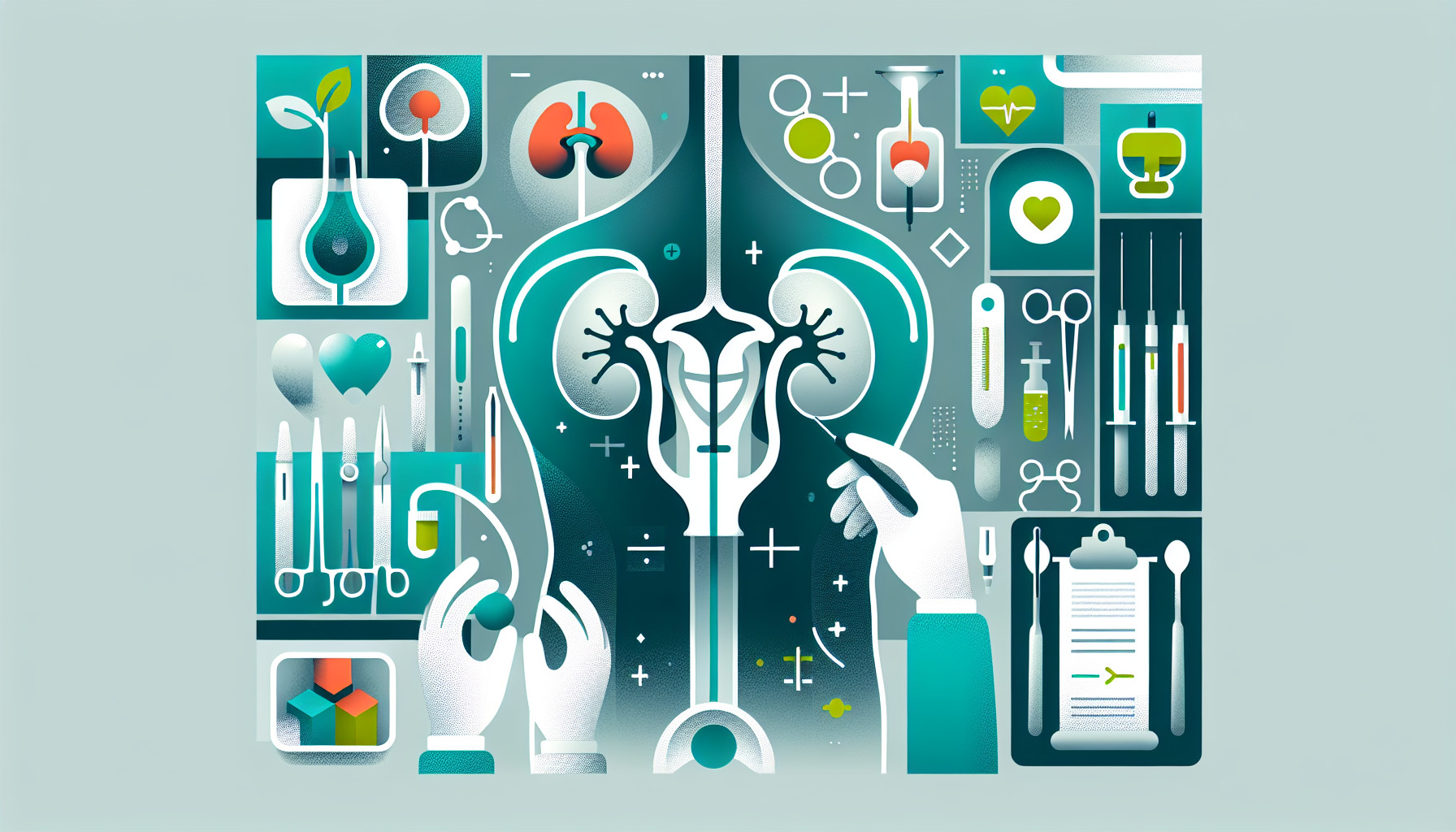Our Summary
Urinary diversion is a procedure that redirects urine flow outside the body, often after surgery to treat bladder or pelvic cancer. It can also be done for other urinary tract problems. In this paper, the authors discuss a type of urinary diversion called incontinent diversion, specifically focusing on the two kinds: cutaneous ureterostomy and ileal conduit.
Cutaneous ureterostomy is not often used and is usually a last resort. The ileal conduit is the most common type of incontinent urinary diversion and is considered the gold standard, meaning it’s the best method against which all other methods are compared.
This method was first described in the 19th century and further developed in the 1950s. It’s believed to have been originally developed by French surgeons during World War II but didn’t become popular until 1950 when a useful adhesive device for ileostomy was introduced.
As medical techniques have improved over time, the process of choosing the right patients for an ileal conduit and the surgical approach has become more precise.
FAQs
- What is a ureterostomy and why is it performed?
- What are the two types of incontinent urinary diversion discussed in the article?
- How has the process of choosing patients for an ileal conduit evolved over time?
Doctor’s Tip
One helpful tip a doctor might tell a patient about ureterostomy is to closely monitor the stoma site for any signs of infection, leakage, or irritation. It’s important to keep the area clean and dry to prevent complications. Additionally, patients should be aware of any changes in urine output or color, as this could indicate a potential issue with the diversion. Regular follow-up appointments with a healthcare provider are essential to monitor the success of the procedure and address any concerns that may arise.
Suitable For
Patients who are typically recommended for ureterostomy include those with:
- Bladder cancer that requires removal of the bladder
- Pelvic cancer that involves the bladder or surrounding organs
- Severe urinary tract problems that cannot be resolved with other treatments
- Injuries or defects in the urinary tract that require diversion of urine flow
These patients may have tried other treatments for their condition but have not had success or have complications that make other treatments ineffective. Ureterostomy can provide a way for these patients to continue to eliminate urine from their bodies while avoiding serious health risks associated with their condition.
It’s important for patients considering ureterostomy to discuss the procedure with their healthcare provider and understand the potential risks and benefits. A thorough evaluation of the patient’s overall health and condition will help determine if ureterostomy is the best option for their specific situation.
Timeline
Before ureterostomy:
- Patient is diagnosed with bladder or pelvic cancer or other urinary tract problems.
- Patient undergoes various tests and consultations to determine the best treatment option.
- Surgeon recommends ureterostomy as the best urinary diversion method.
- Patient undergoes pre-operative preparation, including pre-surgical tests and consultations.
- Surgery is scheduled for ureterostomy.
After ureterostomy:
- Patient undergoes surgery to create the ureterostomy.
- Post-operative recovery period begins, which includes pain management and monitoring for complications.
- Patient learns how to care for the ureterostomy, including changing the bag and managing any complications.
- Patient may experience adjustments in lifestyle and daily activities to accommodate the ureterostomy.
- Follow-up appointments are scheduled to monitor the patient’s progress and adjust the treatment plan as needed.
- Patient adapts to life with a ureterostomy, including managing any physical or emotional challenges that may arise.
What to Ask Your Doctor
Some questions a patient should ask their doctor about ureterostomy include:
- Why do I need a ureterostomy?
- What are the risks and benefits of the procedure?
- What are the alternatives to ureterostomy?
- What is the recovery process like?
- How will the ureterostomy affect my daily life and activities?
- Will I need any special care or equipment after the procedure?
- What are the long-term implications of having a ureterostomy?
- Are there any dietary or lifestyle changes I should make?
- How often will I need follow-up appointments?
- Are there any support groups or resources available for people with a ureterostomy?
Reference
Authors: Tanna RJ, Powell J, Mambu LA. Journal: 2022 Nov 28. In: StatPearls [Internet]. Treasure Island (FL): StatPearls Publishing; 2025 Jan–. PMID: 33351418
